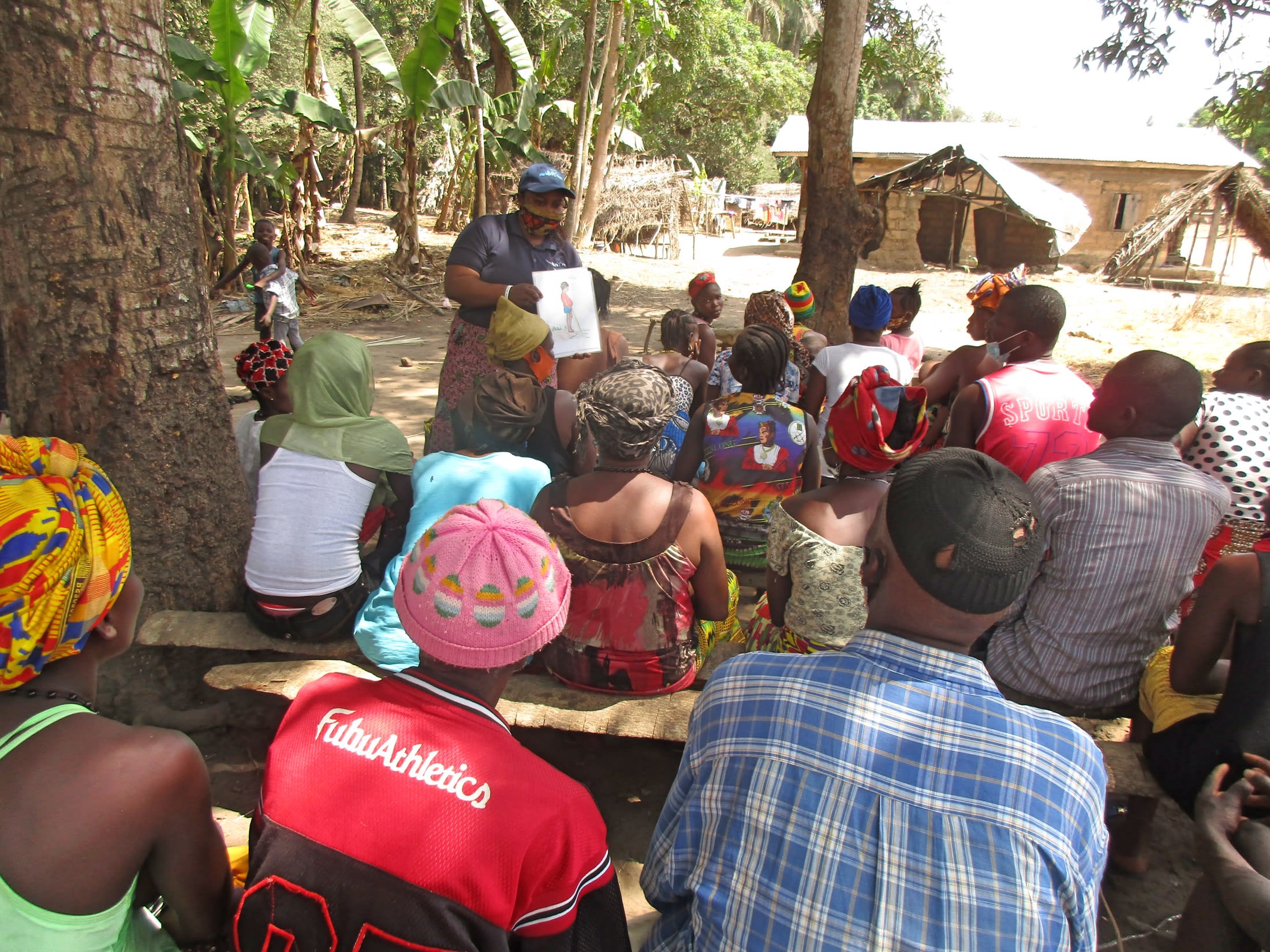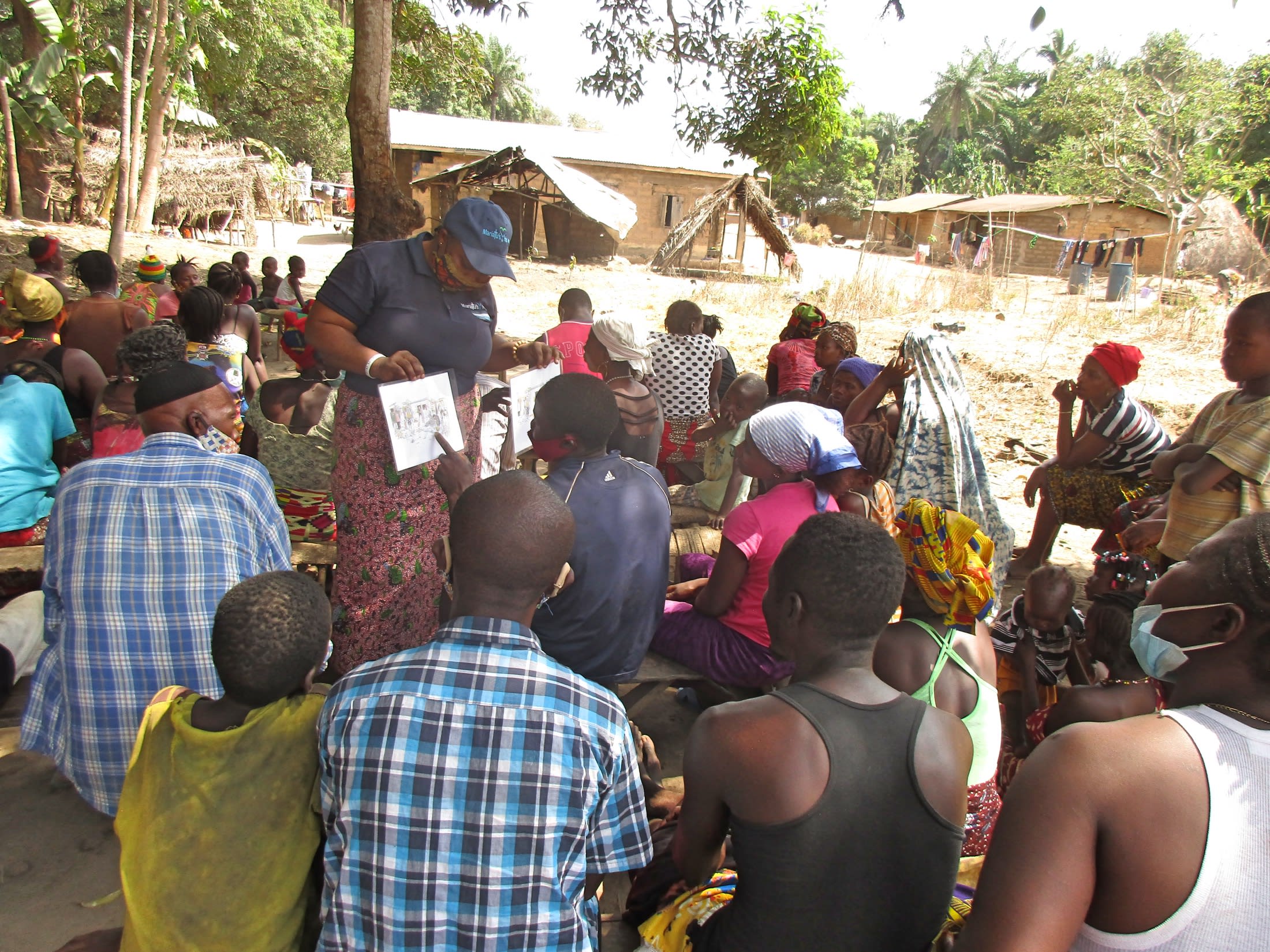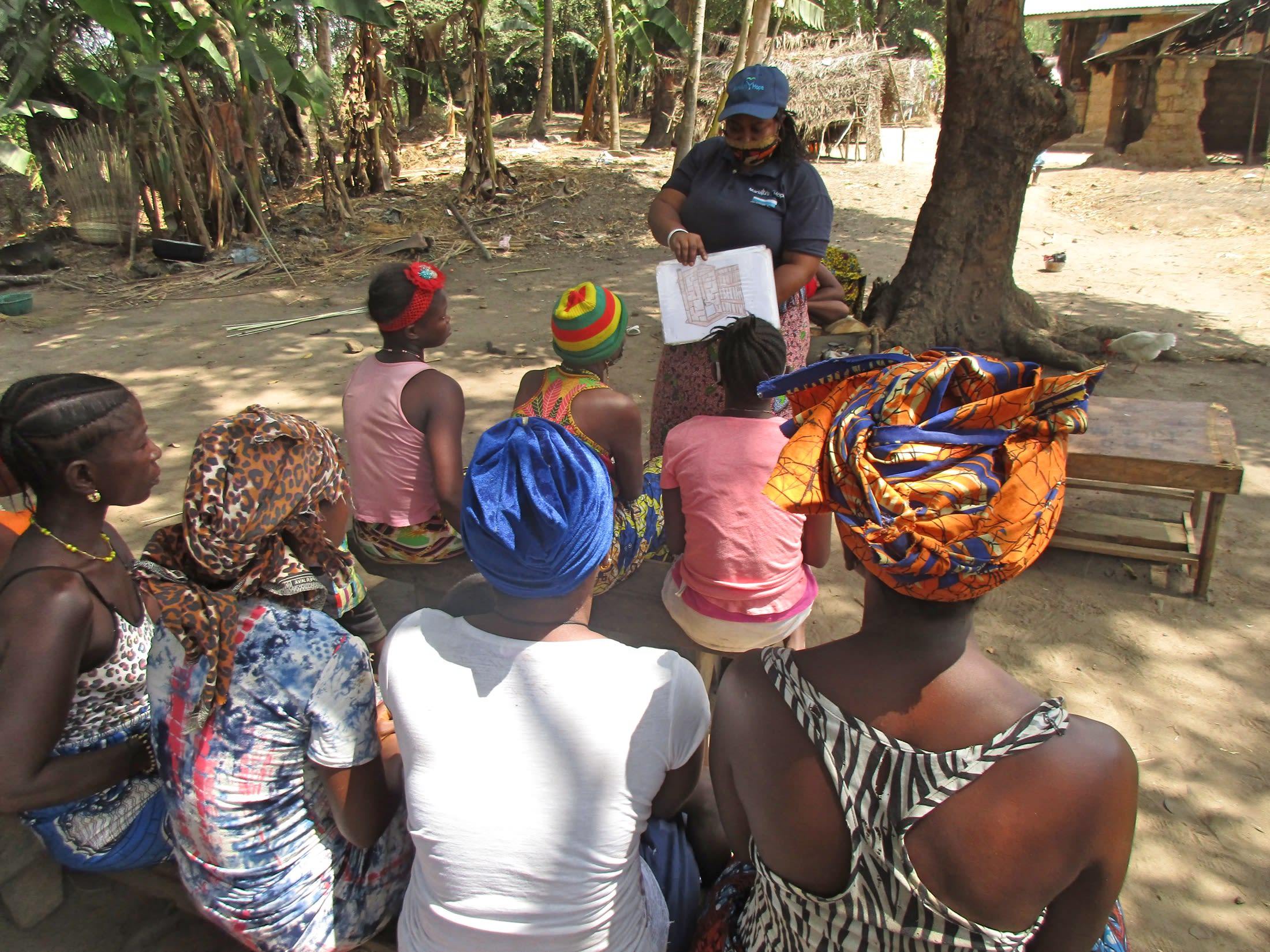The well in Kriema Kiamp hasn't worked since 2007. For the past 14 years, the 512 community members have been drinking nothing but swamp water.
Consuming the water from this source has had deadly consequences for the community members here from cases of typhoid and dysentery. The swamp is also at the bottom of a hill, which means the fertilizers from the farms up at the top of the slope pollute the pool of water below. The community elders advise the children to fetch the water early in the morning: by late afternoon, all the debris from the swamp would have settled at the bottom of its container.

"Imagine having to drink that water day to day," said 16-year-old Sulaiman S. "We cannot afford to buy plastic water sachets, so we make do with what is available. The lack of water translates to not bathing regularly, especially for children. The water is sometimes so salty bathing with it causes salt flakes on our skin."
"After spending the major part of the day at the farm, I am expected to come home and prepare food for the entire family of hungry children," said 30-year-old mother, Zainab Kuyateh. "If I am lucky enough to have water stored from the night before, the cooking will go normally. But if there is no water, I then have to scramble down the hill to the swamp to try and get water clean enough to cook with."
For many of the villagers, the walk to the swamp takes 15 minutes. But for those less fortunate, the journey is long and hard at an hour each way. This places an unbearable burden on the children, who are the ones most likely to fetch water for their families. This story is told most eloquently by the patches of hair missing from some of the children's heads caused by years of carrying heavy buckets full of water, multiple times a day.

Time and health aren't the only costs of Kriema Kiamp's water problems. "A source of income that requires the use of large quantities of water is the processing of palm oil," Zainab explained. "It takes the use of plenty of water, preferably clean water, to properly prepare good quality palm oil."

"The lack of water has caused most families to only process palm oil during the rainy season: a big hit on their livelihood when they depend on it for providing money for school fees and other household expenses," Zainab continued. "Our total household income decreases in the dry season, which should be the time that it increases, but because of the lack of water to tend to the palm oil processing, no income comes in."

Despite their consistent water crisis, community members have made great developments over the years. They have built a bakery, two rice mills, and several fishing boats. They have constructed their homes from more durable materials and increased the number of children attending school. They were very proud to tell us that Kriema Kiamp has a young lady from the village that has gone far as a student of nursing at the university in the Port Loko District.
The people of Kriema Kiamp are ready and willing to improve themselves and their lives. The only thing holding them back now is a lack of safe, reliable water.
Here’s what we’re going to do about it:
Well Rehabilitation
The well marked for this overhaul is dry for a few months every year and needs major work to supply adequate, clean water to the community year round. The pump will be removed, and a hand auger will be lowered inside and powered by a drill team. This hand auger will allow the team to drill several meters deeper to hit a sufficient water column that will ensure the well supplies water throughout all seasons.
As the team drills, casing will be installed, transforming the bottom of this hand-dug well into a borehole. PVC piping will connect this lower system directly to the pump, a construction that we know will also improve the quality of water.
Once this plan is implemented, everyone within the community will have access to safe drinking water in both quality and quantity, even through the dry months.
Hygiene and Sanitation Training
There will be hygiene and sanitation training sessions offered for three days in a row.
After our visit, the hygiene and sanitation trainer decided it would be best to teach community members how to build a tippy tap (a hand-washing station built with a jerrycan, string, and sticks). They will use these tippy taps for handwashing demonstrations, and will also teach about other tools like dish racks and the importance of properly penning in animals.
These trainings will also strengthen the water user committee that manages and maintains this well. They enforce proper behavior and report to us whenever they need our help solving a serious problem, like a pump breakdown.

 Borehole Well and Hand Pump
Borehole Well and Hand Pump
































